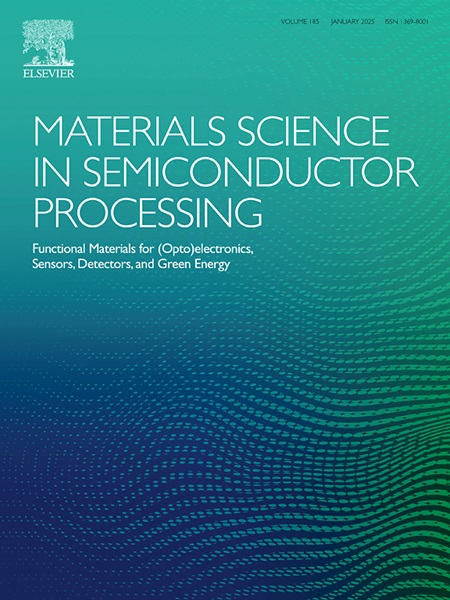Polarity impacts the electrical properties of CuI/ZnO heterojunctions
IF 4.2
3区 工程技术
Q2 ENGINEERING, ELECTRICAL & ELECTRONIC
引用次数: 0
Abstract
Transparent electronics represents a rapidly evolving field of research with numerous applications, including solar cells, photodetectors, thermoelectric devices, and flat panel displays. Utilization of wide-bandgap semiconductors, such as CuI and ZnO, in transparent electronics demonstrates considerable potential. The quality of the interface between CuI and ZnO is determined by various factors, and is crucial for the fabrication of high-quality heterojunctions. This study examines how surface polarity in ZnO influences the interface quality in such heterojunctions. It is experimentally demonstrated that the distinct interactions between CuI and the O- or Zn-polar faces of ZnO induce an uneven development of interface imperfections. CuI deposition on the Zn-polar face of bulk ZnO and ZnO nanorods results in a lower quality heterojunction with a reduced rectification ratio and an increased ideality factor. On the contrary, a lower density of states is observed for the O-polar face, which is reflected in the decreased ideality factor and increased rectification ratio for the CuI/ZnO heterojunction.
极性影响CuI/ZnO异质结的电学性能
透明电子代表了一个快速发展的研究领域,具有许多应用,包括太阳能电池,光电探测器,热电器件和平板显示器。利用宽带隙半导体,如CuI和ZnO,在透明电子显示出相当大的潜力。CuI和ZnO之间的界面质量是由多种因素决定的,是制造高质量异质结的关键。本研究考察了ZnO的表面极性如何影响这种异质结的界面质量。实验表明,CuI与ZnO的O-或zn -极性面之间的不同相互作用导致了界面缺陷的不均匀发展。在体状ZnO和ZnO纳米棒的zn极面上沉积CuI会导致异质结质量降低,整流比降低,理想因子增加。相反,在o极面观察到较低的态密度,这反映在CuI/ZnO异质结的理想系数降低和整流比增加上。
本文章由计算机程序翻译,如有差异,请以英文原文为准。
求助全文
约1分钟内获得全文
求助全文
来源期刊

Materials Science in Semiconductor Processing
工程技术-材料科学:综合
CiteScore
8.00
自引率
4.90%
发文量
780
审稿时长
42 days
期刊介绍:
Materials Science in Semiconductor Processing provides a unique forum for the discussion of novel processing, applications and theoretical studies of functional materials and devices for (opto)electronics, sensors, detectors, biotechnology and green energy.
Each issue will aim to provide a snapshot of current insights, new achievements, breakthroughs and future trends in such diverse fields as microelectronics, energy conversion and storage, communications, biotechnology, (photo)catalysis, nano- and thin-film technology, hybrid and composite materials, chemical processing, vapor-phase deposition, device fabrication, and modelling, which are the backbone of advanced semiconductor processing and applications.
Coverage will include: advanced lithography for submicron devices; etching and related topics; ion implantation; damage evolution and related issues; plasma and thermal CVD; rapid thermal processing; advanced metallization and interconnect schemes; thin dielectric layers, oxidation; sol-gel processing; chemical bath and (electro)chemical deposition; compound semiconductor processing; new non-oxide materials and their applications; (macro)molecular and hybrid materials; molecular dynamics, ab-initio methods, Monte Carlo, etc.; new materials and processes for discrete and integrated circuits; magnetic materials and spintronics; heterostructures and quantum devices; engineering of the electrical and optical properties of semiconductors; crystal growth mechanisms; reliability, defect density, intrinsic impurities and defects.
 求助内容:
求助内容: 应助结果提醒方式:
应助结果提醒方式:


